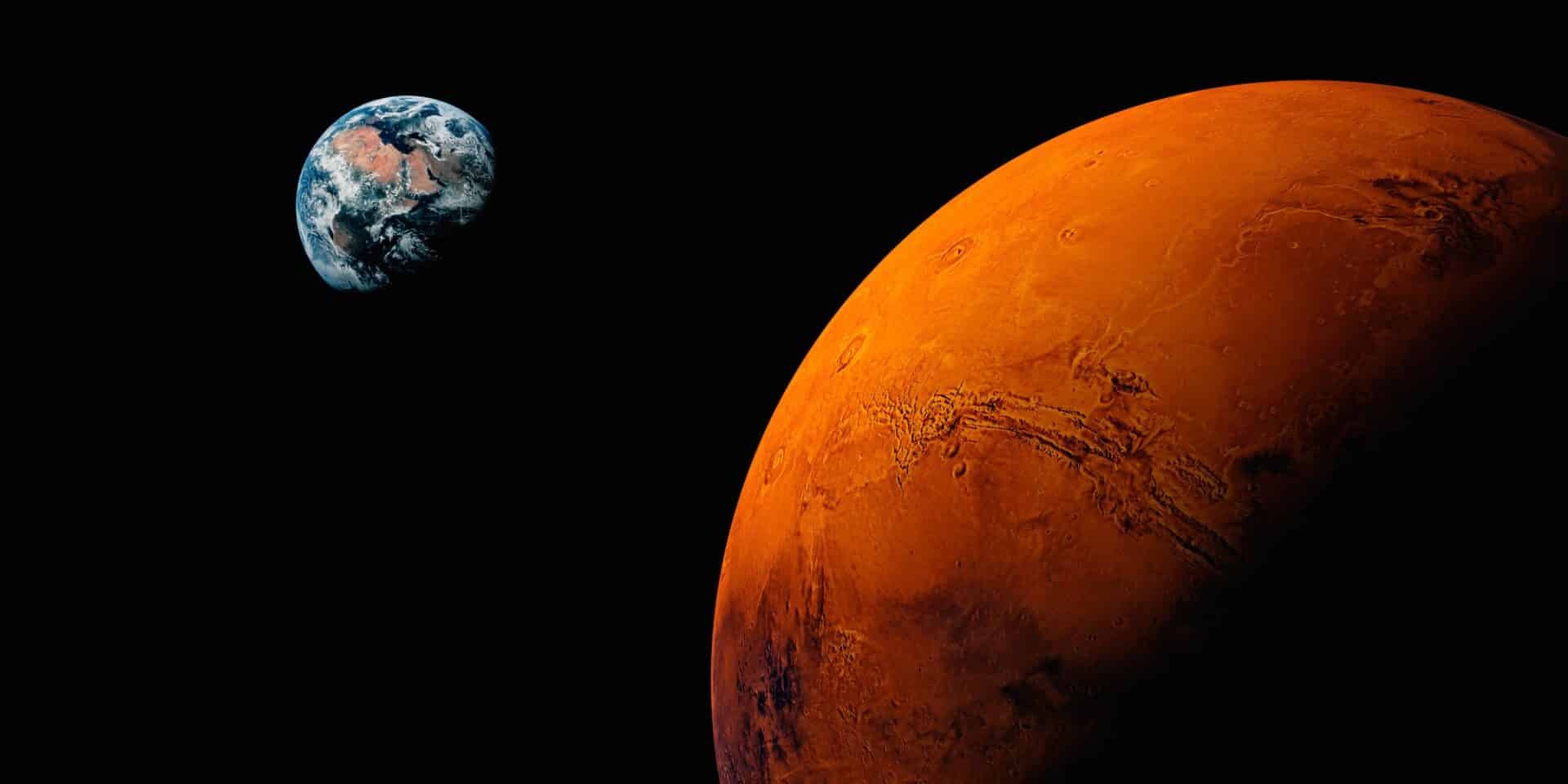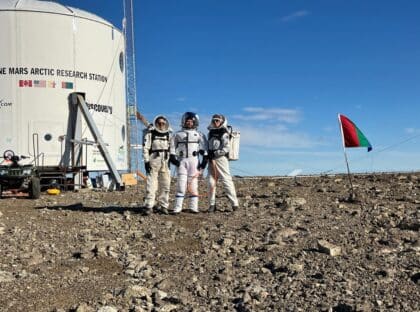
The Mars Technology Institute (MTI) announced today that it is launching a global competition to demonstrate radically more efficient methods of food production needed to support the human settlement of the Red Planet. MTI is calling its contest the Mars Against Hunger (MAH) Prize because the technologies it aims to develop could go a long way towards ending the age-old scourge of hunger on Earth.
There is no technological challenge in providing food for a Mars exploration expedition. Human explorers can simply bring their food supplies from Earth. Similarly, methods adequate to feed a small Mars base of a few dozen people using enclosed greenhouses are well understood. However, such greenhouse methods face severe difficulties if the task is not to feed a Mars base of 40 people, but a small Mars town of 40,000 people, let alone a 1-million-person metropolis such as that proposed by SpaceX’s Elon Musk.

It would take 2 hectares (5 acres) of greenhouse farms operating with the output of an Iowa cornfield (which receives twice the sunlight reaching the Martian equator) to support a 40 person Mars base crew. That seems achievable. But it would take 2,000 hectares of such greenhouses to feed a town of 40,000, or 50,000 hectares of greenhouses to feed a city of 1 million. If instead of being placed on the surface, such farms were operated in underground tunnels using artificial light at 200 W per square meter, the power requirement would be 1,000 MWe and 25,000 MWe, respectively. Meeting these requirements would be extremely difficult.
The problem is the inefficiency of photosynthesis itself, which turns solar energy into food energy at 4% efficiency at the level of the chloroplast, but only 0.2% at the level of the cornfield, and 0.02% efficiency if some of the corn is transformed into beef. This is in sharp contrast to chemical engineering processes, which typically operate with efficiencies ranging from 20% to 80%.
In fact, such high efficiency methods of food production are possible using biotech. Two are well known, and in limited practice. These includes using methods employing methanotrophic bacteria to transform methane into protein1 or using Pichia pastoris yeast to turn methanol into protein2. The bacterial method has the advantage of using methane as feedstock, a fuel which will be produced in large quantities from Martian CO2 and water for use as rocket propellant on Mars. Its disadvantage is that the product protein is only suitable for animal consumption. The yeast approach requires methanol, which is producible from CO2 and water, but in a more complex system than that needed to make methane. Its advantage, however, is that its product closely resembles the Australian delicacy known as Vegemite, and thus could, in principle, be consumed by humans directly. However, both of these methods could potentially be greatly improved in either yield, cost, or quality of product. They might also be made far more palatable by combining them with optimized biological systems, for example by using them to support aquaculture. Alternatively, entirely different pathways to high efficiency food production might be found.
In order to inspire the invention of such critically necessary technology, the MTI is holding the Mars Against Hunger Prize competition, open to anyone anywhere in the world, to set forth and preferably experimentally demonstrate advances. All forms of improvement in such processes will be considered, including quantity of yield, energy or financial cost of product, nutritional value, or taste. The teams that demonstrate the most significant advance, or combination of advances, will win, with prizes of $10,000 for first place, $5,000 for second place, and $2,500 for third place. In addition, because of the extraordinary science education value of engaging in experimental work toward these objectives, there will be special set of first, second and third prizes of $5,000, $2,500, and $1,000 each reserved for experimental demonstrations of advances in such technology performed by teams of secondary school students.
All entrants will need to sign an agreement giving MTI the right to patent their innovation at MTI’s expense, in return for which the inventors will receive a 30% interest in said patent and be named as the inventors on the patent. If MTI declines to patent the invention, the inventors will have the right to patent it themselves.
In addition, the Mars Society will publish a book containing the final reports of all the finalists.
Inventors competing in the contest will be required to submit a preliminary report on their progress by June 30, 2025. On the basis of these reports, finalists for the MAH prize will be chosen, who will be invited to present their final results before a panel of eminent judges at the next international Mars Society convention, which will be held in Los Angeles in October 2025, where the winners will be determined.
Commenting on the MAH Prize contest, Mars Society president Dr. Robert Zubrin said, “Taking on the challenge of the Martian frontier will require inventing methods of food production orders of magnitude more efficient than anything that has ever been done on Earth. This will not just benefit those privileged enough to be able to consider the settlement of the Red Planet. On the contrary, there is nothing that could possibly benefit Earth’s poorest people more than inventing radically more efficient methods of food production. That is precisely what we intend to do. It is not the laid-back critics of space settlement who will end world hunger, but its pioneers. The cause of Mars is the cause of humanity.”
To participate in the Mars Against Hunger Prize Competition, please visit our application web page. Thanks for your involvement!


